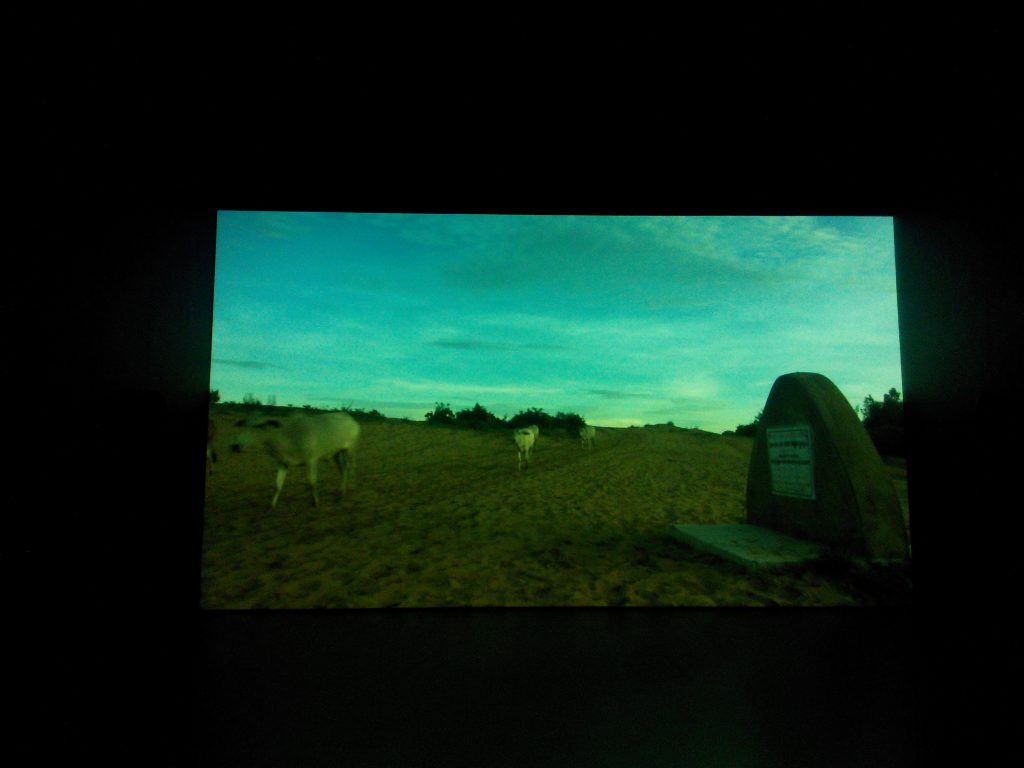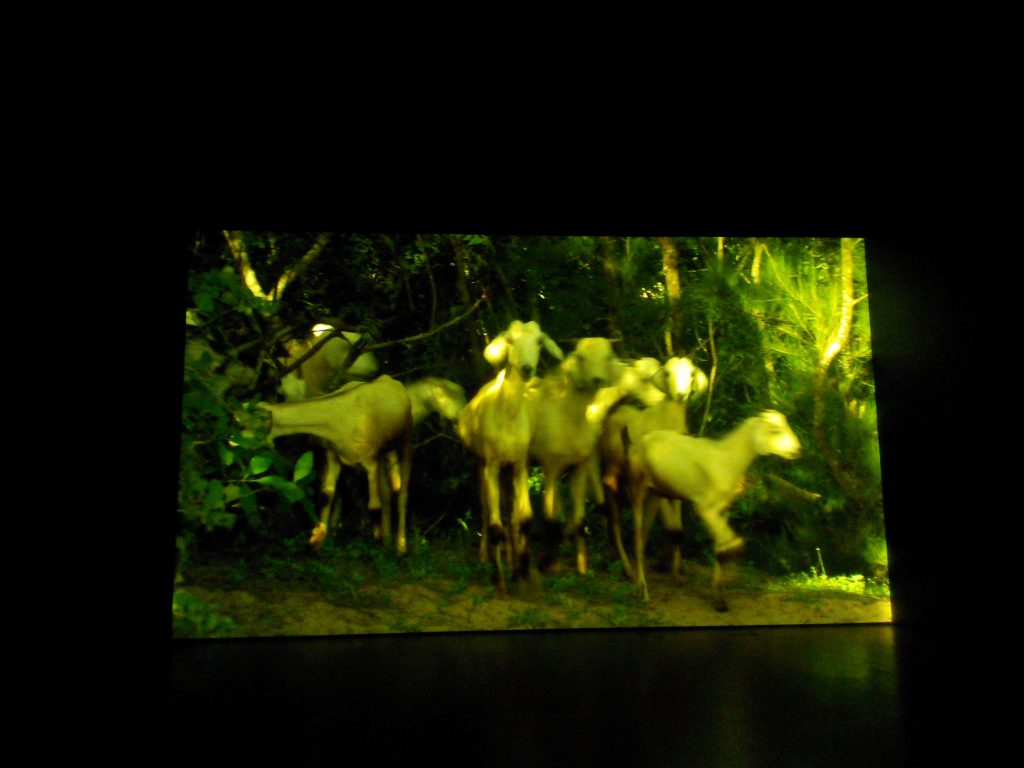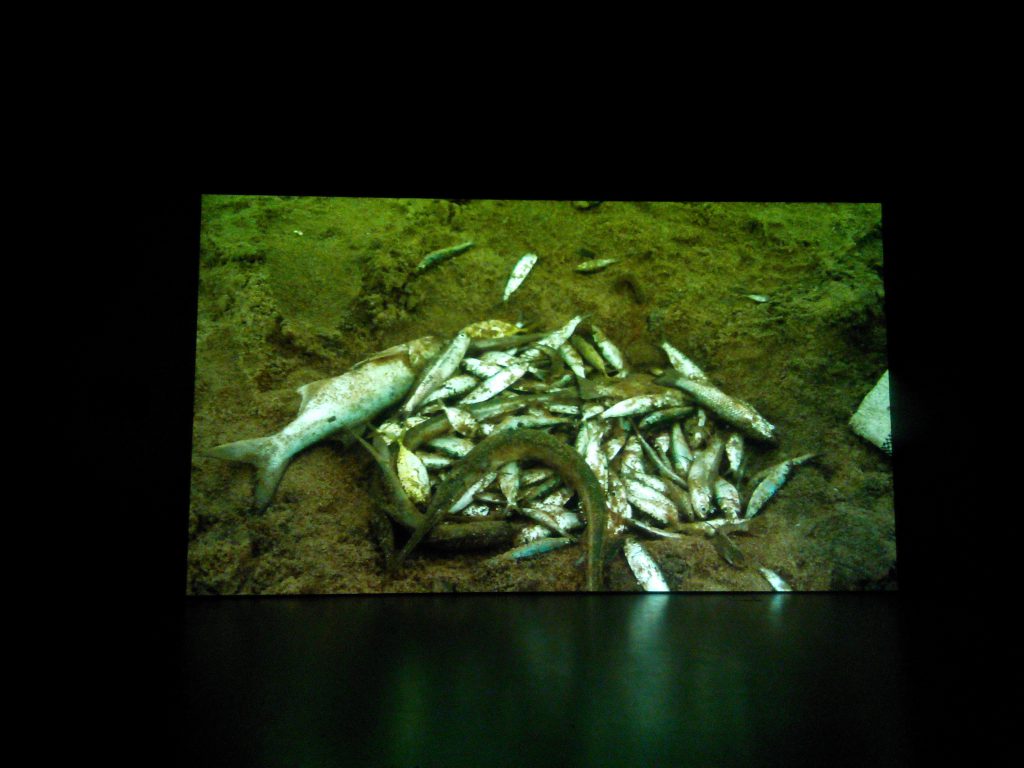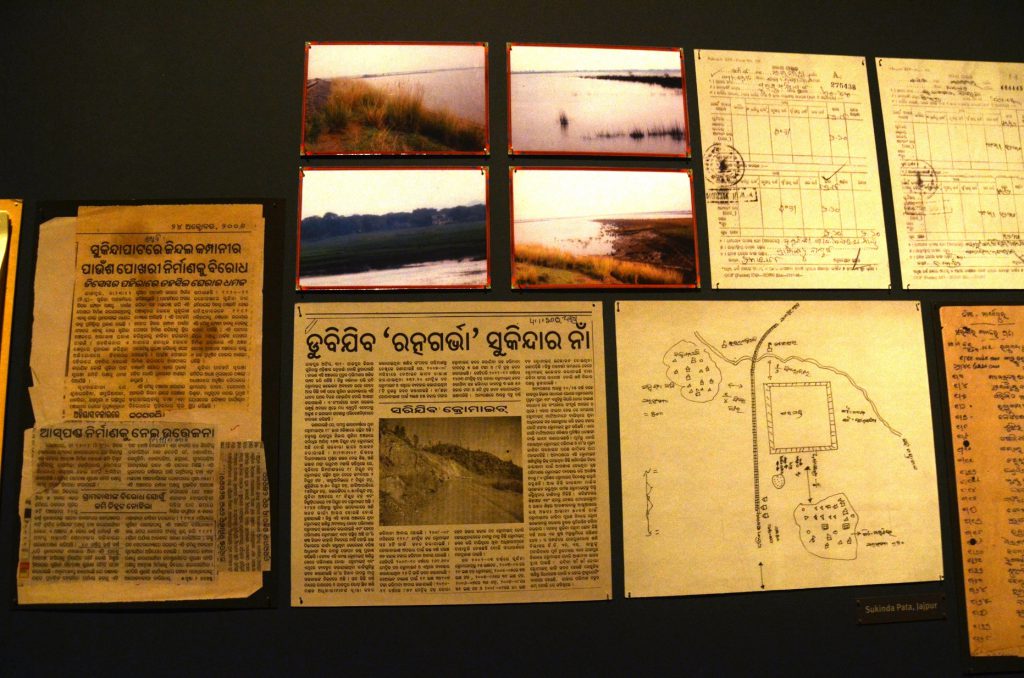
Prior to this trip to NTU CCA, I have only been to art galleries such as the National Museum of Singapore, Singapore Art Museum etc, so this first trip to CCA (a film exhibition) was rather refreshing to me. When I first stepped into the exhibition, I was a little overwhelmed by the extremely dim lighting and had a slight sense of discomfort maneuvering in the darkness.

I remembered having to sit on rather uncomfortable benches while watching The Scene of Crime, a beautifully crafted, slow paced and immersive film.

Initially, I could not really understand the random images flashing past with occasional text appearing and I felt like walking away when the others did after a while. 
However, I chose to stay and watch till the end of the film, hoping to grasp something out of it.

The scene of crime is a film portraying the resistance of local communities to the industrial interventions that have been taking place in the state of Odisha since 1999. In this war by the state against its own land and people, the film takes me to a place that is systematically pillaged by mining and other industries. The industrial exploitation of Odisha creeps into existence without any particular concern for the immeasurable humans and environmental repercussions of these developments and Amar Kanwar dedicated his time for a prolonged investigation of the situation before coming up with this eventual exhibition that acts like a bridge, connecting the people there and the outside world, calling upon international awareness.



The rather slow paced of the film allows the audience to enjoy the film in greater detail instead of the faster paced film we are now more used to. It leaves some space for the audience to process their thoughts before piling on the next information to them. The consistent style of minimal talking gives a comfortable atmosphere for the thought processing as well. After sitting through the film, I could get a vauge idea of what Amar Kanwar is trying to portray and I remembered leaving the film screening area with a heavy heart.
Subsequently, I walked around the exhibition, around the evidences section where many news articles, petitions with finger prints and photographs were put up. 
The sense of reality hit me hard after seeing all these coupled with the film earlier.






Proceeding to the seed room, I was amazed by the different types of grains shown in little brackets attached to the wall. As I walked around, I began to realise that in the recent past, Odisha had over 30,000 varieties of traditional paddy see with an assured stable yield of fifteen to twenty quintals of rice per acre but now Odisha only has 20 high yielding varieties of the paddy that dominate all rice cultivation due to the creation of adverse planting conditions and exploitation of the land by industries.

The Sovereign forest attempts to reopen discussion and bring forth responses to these crime, politics, human rights and ecology involved in this case. While it is not easy for a first timer like me to understand the exhibition fully, it is still considered successful since I can get a rough idea of what it is all about and that Amar Kanwar has managed to narrate the story telling through different mediums, ranging from film, to photography and to artifacts etc. Overall, it was a very thought evoking experience with a strong lasting impact on its audience.
